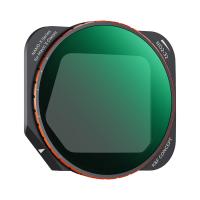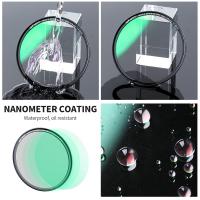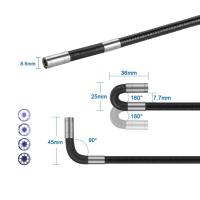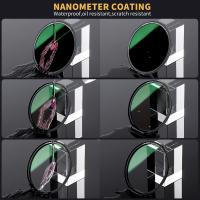How Scanning Tunneling Microscope Works ?
A scanning tunneling microscope (STM) works by using a sharp probe to scan the surface of a sample at a very close distance. The probe is brought very close to the surface, and a small voltage is applied between the probe and the sample. This creates a tunneling current, which is highly sensitive to the distance between the probe and the surface. By measuring this current, the STM can create a detailed image of the surface topography at the atomic scale. The probe is typically made of a conductive material, such as tungsten or platinum, and it is extremely sharp to allow for precise scanning. The STM has been instrumental in advancing our understanding of materials and nanoscale structures.
1、 Quantum tunneling
The scanning tunneling microscope (STM) is a powerful tool used to observe and manipulate matter at the atomic and molecular scale. It works based on the principle of quantum tunneling, which allows electrons to pass through potential barriers that would be classically impossible.
In an STM, a sharp metallic tip is brought very close to the surface of a sample. A small voltage is applied between the tip and the sample, creating a potential difference. Due to quantum tunneling, electrons can "tunnel" through the potential barrier and flow between the tip and the sample. The tunneling current is highly sensitive to the distance between the tip and the sample surface, allowing for precise measurements of the surface topography.
The STM operates by scanning the tip across the sample surface in a raster pattern. As the tip moves, the tunneling current is constantly adjusted to maintain a constant distance between the tip and the surface. The variations in the tunneling current are used to generate a three-dimensional image of the surface, revealing atomic-scale details.
Recent advancements in STM technology have allowed for even greater precision and control. For example, researchers have developed techniques to manipulate individual atoms and molecules using the STM tip. This has opened up new possibilities for studying and manipulating matter at the nanoscale, leading to advancements in fields such as nanotechnology, materials science, and surface chemistry.
In conclusion, the scanning tunneling microscope operates based on the principle of quantum tunneling, allowing for the observation and manipulation of matter at the atomic scale. Ongoing advancements in STM technology continue to push the boundaries of what is possible in the field of nanoscience.

2、 Scanning mechanism
The scanning tunneling microscope (STM) is a powerful tool used in nanotechnology to image and manipulate individual atoms and molecules on a surface. The STM works by scanning a sharp metal tip across the surface of a sample, while maintaining a small distance between the tip and the surface.
The scanning mechanism of the STM involves a feedback loop that constantly adjusts the position of the tip to maintain a constant tunneling current between the tip and the surface. This is achieved by applying a bias voltage between the tip and the sample, which creates a potential difference that allows electrons to tunnel between them. As the tip scans across the surface, the tunneling current is measured and used to adjust the tip's position.
The tip is mounted on a piezoelectric scanner, which can move the tip in three dimensions with high precision. The scanner is controlled by a computer, which receives the feedback from the tunneling current and adjusts the position of the tip accordingly. This allows the STM to create a detailed map of the surface topography at the atomic scale.
In recent years, there have been advancements in STM technology that have improved its capabilities. For example, researchers have developed new types of tips with functionalized ends, allowing for the manipulation of individual atoms and molecules on a surface. Additionally, there have been developments in the use of STM in combination with other techniques, such as spectroscopy, to study the electronic properties of materials.
Overall, the scanning tunneling microscope is a remarkable tool that has revolutionized our ability to study and manipulate matter at the atomic scale. Its scanning mechanism, combined with advancements in tip technology and complementary techniques, continues to push the boundaries of nanotechnology research.

3、 Feedback control
The scanning tunneling microscope (STM) is a powerful tool used to image and manipulate individual atoms and molecules on surfaces. It operates based on the principle of quantum tunneling, where a sharp tip is brought very close to the surface of a sample, and a small voltage is applied between the tip and the sample.
The key to the operation of an STM lies in the feedback control mechanism. As the tip approaches the surface, the tunneling current between the tip and the sample is measured. This current is extremely sensitive to the distance between the tip and the surface, with the current decreasing exponentially as the tip-sample distance increases. By monitoring this current, the feedback control system adjusts the position of the tip to maintain a constant tunneling current.
The feedback control system works by continuously adjusting the position of the tip based on the measured tunneling current. If the current is too high, indicating that the tip is too close to the surface, the control system moves the tip slightly away. Conversely, if the current is too low, indicating that the tip is too far from the surface, the control system moves the tip closer. This constant adjustment allows for precise control of the tip-sample distance, enabling the imaging and manipulation of individual atoms.
In recent years, advancements in feedback control systems have greatly improved the capabilities of STM. For example, the use of advanced algorithms and real-time data processing has allowed for faster and more accurate positioning of the tip. Additionally, the integration of atomic force microscopy (AFM) capabilities into STM systems has expanded their functionality, enabling the measurement of surface topography and mechanical properties in addition to atomic-scale imaging.
Overall, the feedback control mechanism is crucial for the operation of an STM, allowing for precise positioning of the tip and enabling the study of atomic-scale phenomena. Ongoing advancements in feedback control technology continue to enhance the capabilities of STM, opening up new possibilities for nanoscale research and manipulation.

4、 Atomic resolution imaging
The scanning tunneling microscope (STM) is a powerful tool used to image surfaces at the atomic level. It works by scanning a sharp tip over the surface of a sample, while measuring the flow of electrons between the tip and the sample.
The tip of the STM is extremely sharp, typically made of tungsten or platinum-iridium, and tapers down to a single atom at the apex. It is positioned just a few angstroms above the surface of the sample. A small voltage is applied between the tip and the sample, creating a tunneling current.
As the tip is scanned across the surface, the tunneling current is kept constant by adjusting the height of the tip. This height adjustment is done using a feedback mechanism that maintains a constant distance between the tip and the sample. The feedback mechanism measures the tunneling current and adjusts the tip's position accordingly.
The tunneling current is highly sensitive to the distance between the tip and the sample. As the tip encounters atoms on the surface, the tunneling current changes, providing information about the atomic structure of the surface. This information is then used to create an image of the surface, with atomic resolution.
Recent advancements in STM technology have allowed for even higher resolution imaging. For example, researchers have developed techniques to manipulate individual atoms using the STM tip, enabling the creation of atomic-scale structures. Additionally, new types of STM probes, such as those made of carbon nanotubes, have been developed to improve imaging capabilities.
Overall, the scanning tunneling microscope has revolutionized our ability to study and manipulate matter at the atomic scale, providing valuable insights into the world of nanotechnology and materials science.



















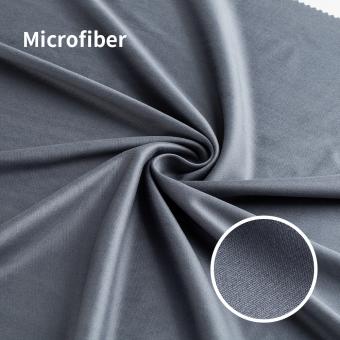








![Carbon Monoxide Detectors Portable Temperature Detector/Humidity Sensor/Air Quality Meter Smoke CO Gas Monitor [3 in 1] Alarm Carbon Monoxide Detectors Portable Temperature Detector/Humidity Sensor/Air Quality Meter Smoke CO Gas Monitor [3 in 1] Alarm](https://img.kentfaith.de/cache/catalog/products/de/GW40.0007/GW40.0007-1-200x200.jpg)
